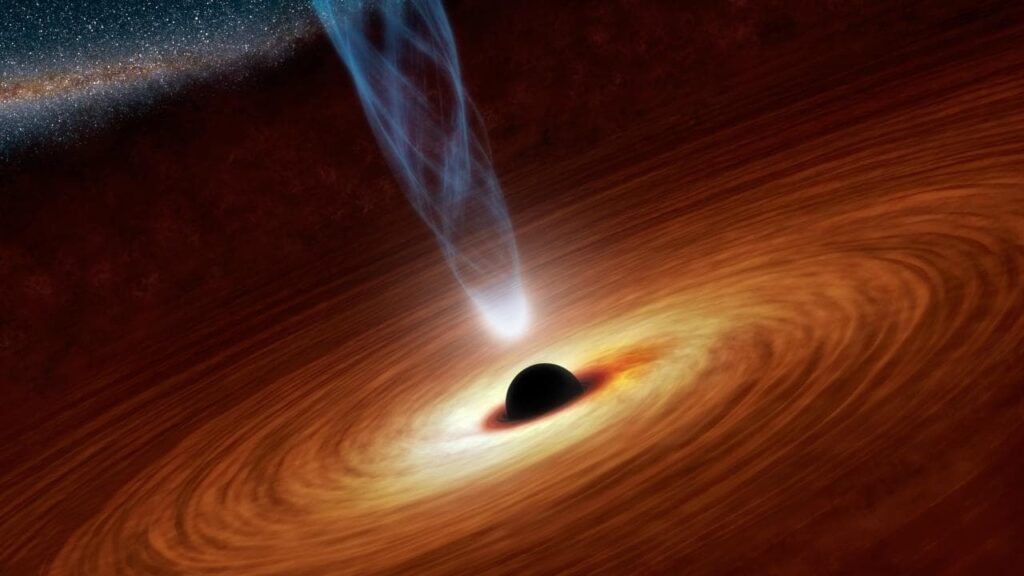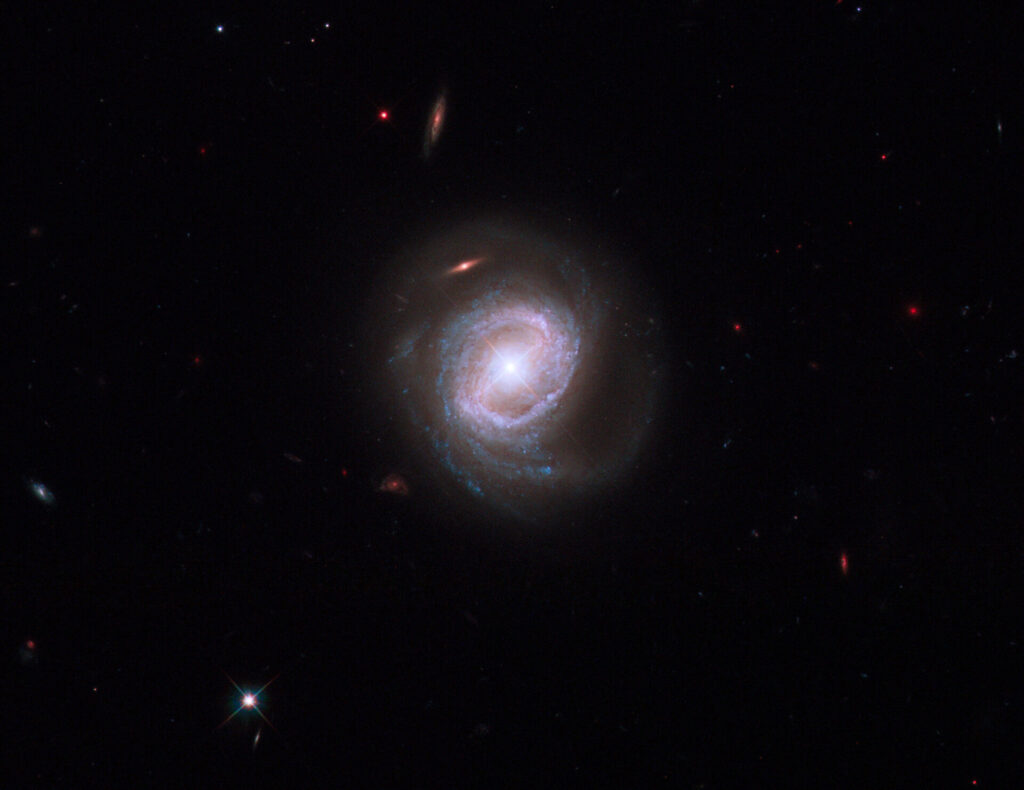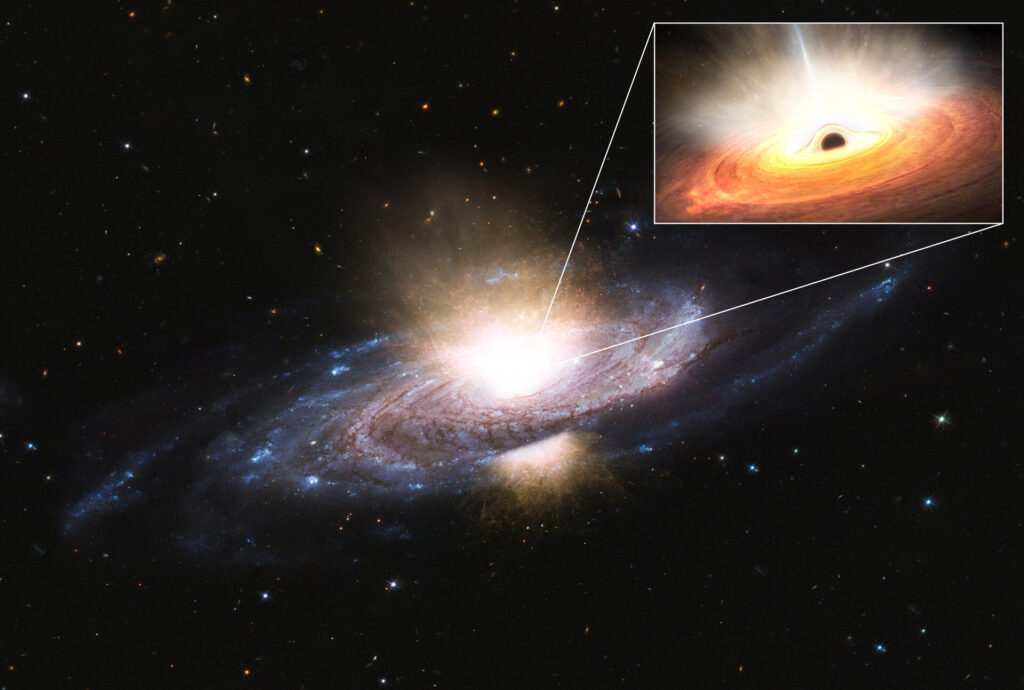Analysis of data collected by the X-ray telescope XMM-Newton allowed researchers to detect a deceptively “silent” black hole. Its hidden activity affects the processes of star formation throughout the galaxy.
How do black holes affect their galaxies
At the center of almost every large galaxy is a supermassive black hole, which powerful gravity draws gas from the environment. As the gas spirals, it accumulates into a flat accretion disk. The matter in it is ground, heated to enormous temperatures, which is accompanied by the release of a large amount of energy, and then passes the point of no return and is absorbed.

However, black holes do not absorb all the gas from the accretion disk. Part of the matter is thrown back out. This usually occurs in the form of two polar jets. But in some cases, matter from the accretion disk is ejected in all directions at such a rate that it sweeps away the surrounding interstellar gas. This not only deprives the black hole of food, but also leads to the fact that new stars can no longer form in the vast region next to it, which changes the structure of the galaxy.
So far, this ultrafast “wind” of a black hole has been detected only in very bright accretion disks, which are at the limit of their ability to draw matter in. But thanks to the X-ray telescope XMM-Newton, astronomers could detect this effect in an ordinary galaxy.
“Silent” galaxy
The discovery was made during the study of the galaxy Markarian 817. It attracted the attention of researchers with its “silence” — very little X-ray radiation emanated from its center. Subsequently, it turned out that the reason for this was the wind produced by a supermassive black hole. It acted like a shroud, blocking the radiation coming from the black hole’s immediate surroundings.

A detailed analysis of X-ray measurements showed that despite the apparent calm, the black hole in Markarian 817 produced very powerful winds, and this continued for at least a year.

The discovery helps astronomers find the answer to the question of how black holes affect their surroundings. Many galaxies, including the Milky Way, have vast regions around their centers in which very few new stars are forming. This can be explained by the winds of black holes, which wash out star-forming gas. Previously, it was believed that this required an extremely active black hole with a massive accretion disk. But now it has become clear that even a black hole absorbing a moderate amount of matter can have a very significant impact on its galaxy.
According to https://www.esa.int
Follow us on Twitter to get the most interesting space news in time
https://twitter.com/ust_magazi


